A more resilient healthcare facility
A guide to bouncing back from disruptions, maintaining quality, and preserving relevance
Oct 2, 2023
3 minutes
When you prioritize resilience in healthcare design, you enable facilities to readily respond to disruptions, big and small, and adapt as needs evolve. With that comes peace of mind that you’re ready for anything the future throws your way.
In healthcare, a mass crisis is always a possibility. Because of this, an essential and often overlooked part of preparation comes before a healthcare facility is even built.
In the absence of facility flexibility, new and unexpected demands lead staff to create workarounds and do their best to adjust their processes within the limitations of their environment.
A static healthcare facility leads to considerable costs—not only to the bottom line, but also to the staff’s ability to care for patients.
Resilience in action
What does resilience look like?
Furnishings designed specifically for redeployment so they can continually support the health system’s strategy for delivering the best patient care, even when that strategy requires a real estate pivot. The modularity of a system like Compass from our Herman Miller brand allows for quick changes.
Flexible furnishings that can readily adapt to accommodate new people, processes, equipment, and even service lines with minimal cost and downtime. Herman Miller’s Co/Struc boasts the adaptability needed to help care environments evolve.
A hospital system that uses its facility as a tool to help solve problems brought on by an unexpected crisis. Combining the beauty of millwork with the benefits of prefab, Commend Nurses Station from Herman Miller can be readily moved and is amenable to contingency planning.
Chairs designed with removable components that can be easily swapped out when damaged, so the chair can stay in use. Replaceable components expand the lifetime of the Nemschoff Brava Collection for a better return on investment.
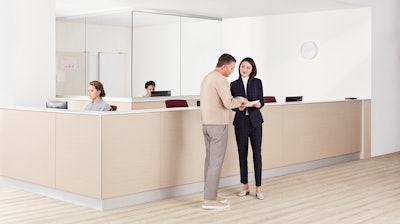
Capabilities and benefits
Ready to start building resilience? Here are some capabilities to think about as you begin your planning.
Adaptability: Iterate on existing elements to continuously improve what you have.
Contingency planning: Use amenable design solutions that are ready for various disruptions.
Reliability: Build in redundancies to achieve the same purpose using different elements.
Versatility: Use the same elements in different ways.
Modularity: Redeploy components to reduce or eliminate downtime.
System capability: Allow for micro adjustments to features within the larger system.
We can usefully define resilience as a company’s capacity to absorb stress, recover critical functionality, and thrive in altered circumstances.*
Plan early with an experienced partner
Achieve maximum benefits by partnering with organizations experienced in optimizing performance continuously over time.
Some key attributes to look for:
Healthcare expertise: Experienced professionals who rigorously research and understand specific requirements of healthcare environments provide valuable direction throughout the process.
Reliable building blocks: A quality, adaptive kit of parts from a reliable partner affords the ability to refresh, reconfigure, and relocate elements of the built environment with minimal downtime or additional cost.
A proven process: Consider flexibility at the outset of planning. The process should integrate resilience thinking, planning frameworks, and adaptive building components, as well as awareness of what an uncertain future may bring.
A local partner: Ensure your facility will continuously perform over time with partners who are with you every step of the way—through design, acquisition, installation, and after project completion.
With preparation comes peace of mind
When you invest in capabilities that make your facility resilient, you’ll benefit from the peace of mind that comes from knowing you’re prepared to perform despite disruptions.
Whether that disruption is cyclical—like protecting your facilities against normal wear and tear—or irregular—like a pandemic—your facility can flex to handle it.
3-point recap
Prioritizing resilience before your healthcare facility is even built is the key to handling disruptions, helping the bottom line, and ensuring the best possible care.
For minimal cost and downtime, furnishings should be flexible enough to accommodate new people, processes, and equipment, as well as modular for redeployment.
Choosing a reliable local partner with expertise will ensure that you’re prepared to perform despite cyclical or irregular disruptions.
Featured products
Our collection of healthcare designs includes casework, seating, and more from our collective of brands. Check out the offering to see which ones best support your path to a resilient facility.
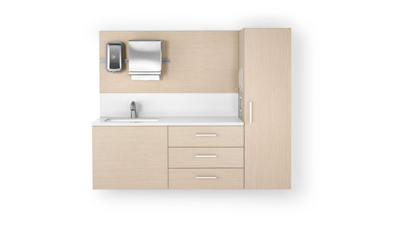
Mora System by Herman Miller
Mora’s versatile kit of parts creates dedicated spaces for consulting, examining, and treating patients—efficient in design and convenient for all.
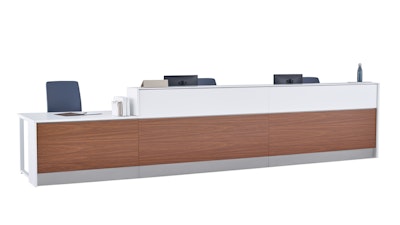
Commend Nurses Station by Herman Miller
Commend can scale across clinical spaces, bringing clarity and order to team environments.
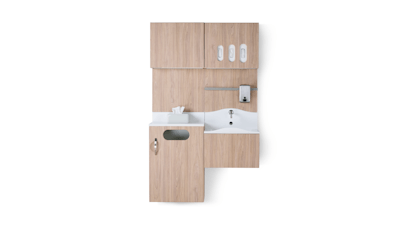
Compass System by Herman Miller
Designed with change in mind, Compass helps shape clinical spaces with the readiness to adapt while keeping the footprint compact.
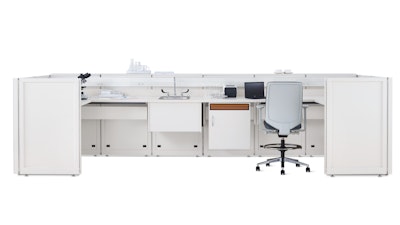
Co/Struc System by Herman Miller
The original movable, modular system for healthcare applications is durable, easy to clean, and keeps supply rooms, pharmacies, and labs organized.
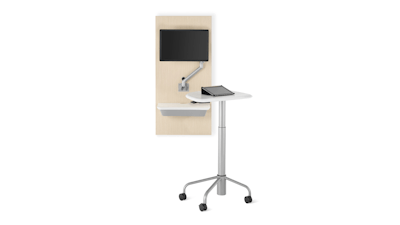
Intent Solution by Herman Miller
An ideal tool for clinicians in exam rooms, allowing them to focus on conversations with patients and use technology more naturally.
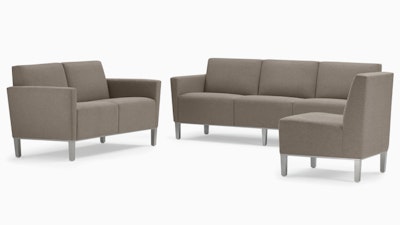
Nemschoff Brava Collection by Herman Miller
The sophisticated Brava collection lets you create a number of combinations in perfect harmony, whether you’re in a waiting area or patient room.
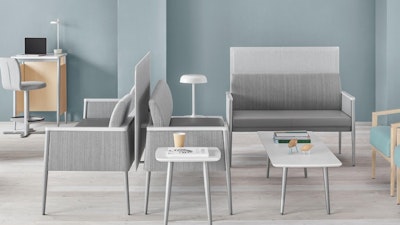
Nemschoff Palisade Collection by Herman Miller
Palisade is modular and flexible, with integrated tables and intuitive storage options. And by using the great variety of pieces across your floorplate, a consistent look is achieved, no matter the material or application.
Planning for resilience
How a not-for-profit health system enables resilience capabilities—and how you can, too.